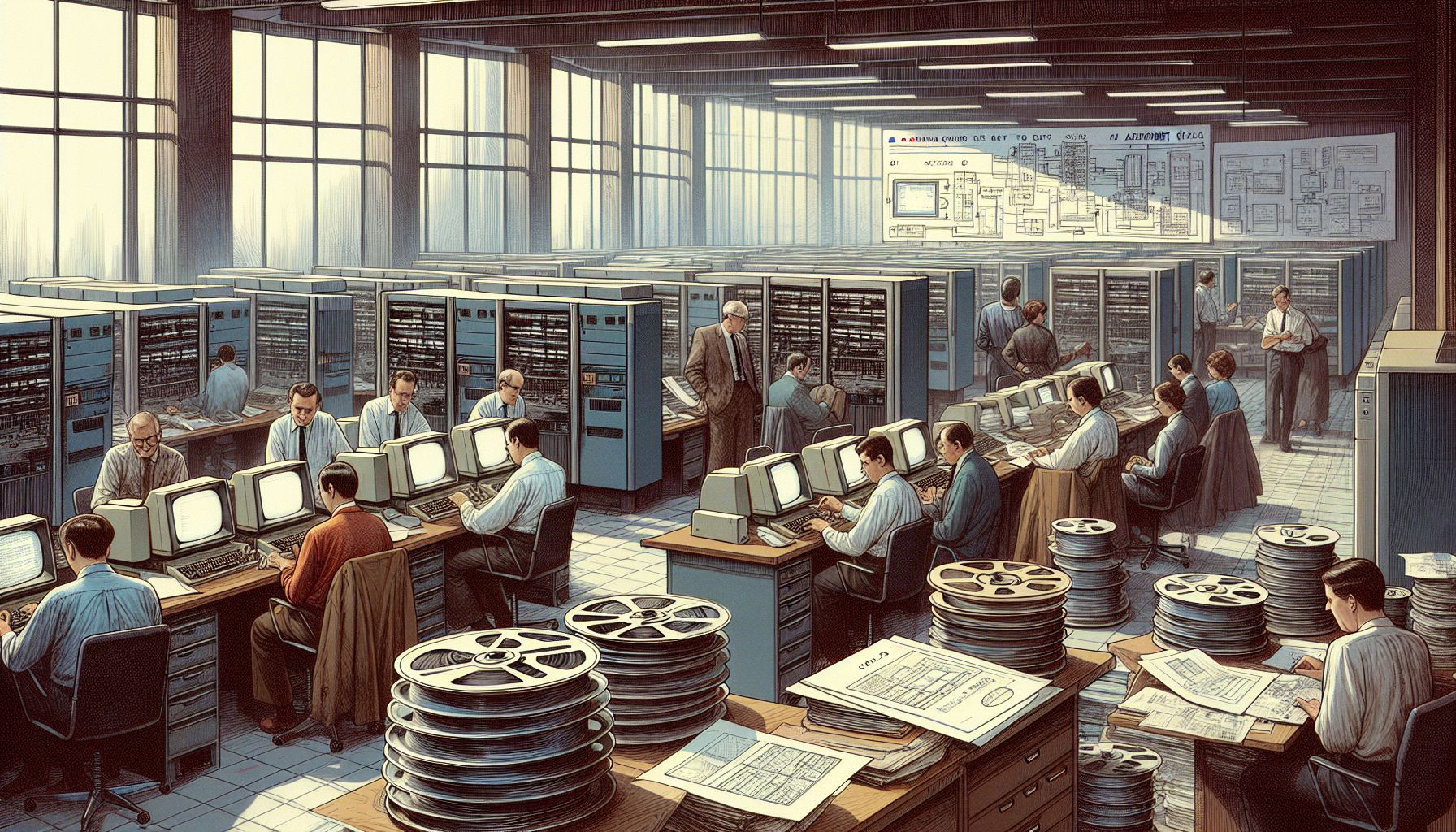📌 Let’s explore the topic in depth and see what insights we can uncover.
⚡ “Before you could tweet, swipe right, or ask Alexa, the foundations of the Internet were being laid in a Cold War think tank. Delve into the beginnings of ARPANET, the daring 1969 project that revolutionized how the world communicates.”
In the digital age, it’s hard to imagine a world without the Internet. We use it for everything from online shopping and social networking to remote working and online education. But have you ever stopped to think about how it all began? Underlying the colossal network of information that we know today as the Internet is its precursor, the Advanced Research Projects Agency Network (ARPANET). This blog post will take you on a journey back to 1969, when ARPANET was born, setting the stage for the era of digital communication and information sharing. ARPANET, a pioneer of packet switching technology and the first wide area network (WAN), laid the foundation for the Internet’s development. As we explore the creation of ARPANET, you’ll appreciate the ingenuity, vision, and tenacity that went into its development. You’ll also get a sense of the historic significance and revolutionary impact of ARPANET on contemporary society. So, sit back, fasten your time-travel seatbelt, and let’s dive into the fascinating story of ARPANET’s inception.
🚀 The Genesis of ARPANET

Journey Back: Birth of ARPANET, Internet's Ancestor (1969)
The inception of ARPANET can be traced back to the late 1960s, during the height of the Cold War. The United States Department of Defense’s Advanced Research Projects Agency (ARPA, now known as DARPA) was grappling with a significant challenge. They were trying to find a way to connect the computers at their research institutions to facilitate communication and information sharing. ARPA turned to a bold new concept called packet switching, an innovative method of transmitting data that was radically different from the traditional circuit-switching system. The idea was simple yet powerful: break down data into smaller chunks, or “packets,” and send them over the network independently. It’s akin to sending a large puzzle piece by piece through the mail and assembling it at the final destination. The beauty of packet switching lies in its resilience - if one packet gets lost or delayed, the others can still reach their destination.
🧩 The Building Blocks of ARPANET
In 1968, ARPA contracted BBN Technologies, a private firm specializing in research and development, to build the first Interface Message Processor (IMP). The IMP is comparable to a modern-day router, serving as the gateway that connected local networks to the ARPANET. On October 29, 1969, the first message was sent over the ARPANET from a computer at UCLA to one at Stanford Research Institute (SRI). The system crashed after only two letters of the word “LOGIN” were transmitted. However, this event marked a revolutionary milestone in the history of telecommunications. The ARPANET was officially alive, and the era of digital communication had begun. The ARPANET expanded rapidly. By the end of 1969, four nodes were operational: UCLA, SRI, University of California, Santa Barbara, and University of Utah. In the early 1970s, ARPANET began to include non-military sites, and its reach extended beyond the United States. The network’s growth was driven by its open-architecture networking, which allowed computers and networks from different manufacturers and vendors to communicate with each other.
📜 The Birth of Internet Protocols
The continued growth and diversification of ARPANET required the development of a standardized set of protocols to ensure efficient and reliable communication. Enter Robert Kahn and Vinton Cerf, the architects of the Transmission Control Protocol/Internet Protocol (TCP/IP). Think of TCP/IP as the universal language for computers in the network. It’s like the conductor of a symphony, ensuring each instrument (or computer) plays the right note at the right time to create a harmonious performance. The adoption of TCP/IP on January 1, 1983, was a significant evolution in the ARPANET’s history, marking the birth of the modern Internet.
🌐 From ARPANET to the Internet
The 1980s saw the decentralization of ARPANET’s infrastructure and the emergence of other networks, such as CSNET for institutions unable to connect to ARPANET, and NSFNET, the National Science Foundation’s network for research and education. These networks, along with others worldwide, coalesced into a global “network of networks” - the Internet. ARPANET was officially decommissioned in 1990, but its legacy lives on. Its foundational principles and technologies continue to underpin the Internet as we know it today. ARPANET not only revolutionized communication and information sharing but also catalyzed a dramatic shift in how we live, work, and learn.
🧭 Conclusion
The creation of ARPANET was undoubtedly a landmark event in the annals of technology. Its innovative packet switching technology and the development of TCP/IP protocol were precursors to the digital revolution that followed. As we navigate through the 21st century, the importance of ARPANET’s contribution to the evolution of the Internet cannot be overstated. While ARPANET may be a thing of the past, it serves as a powerful reminder of how innovation, vision, and relentless determination can shape the future. So, the next time you send an email, stream a video, or enjoy the convenience of online shopping, spare a thought for ARPANET—the humble beginnings of the vast and intricate world of the Internet.
🤖 Stay tuned as we decode the future of innovation!
